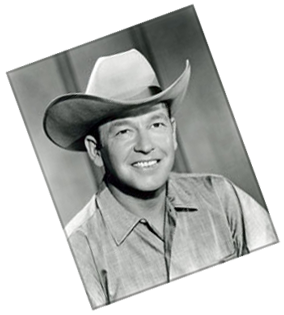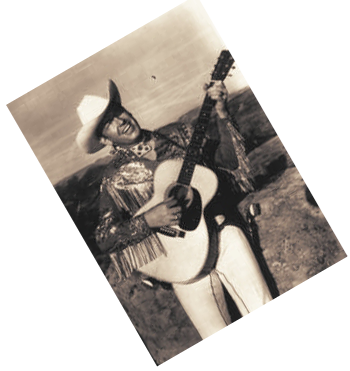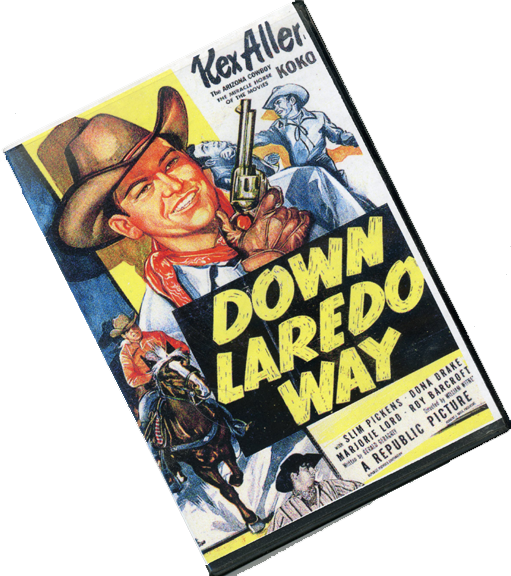



WILLCOX Cowboy Hall of Fame inductees
BILLIE RIGGS (27)
1924 - 2014
1987 COWBOY HALL OF FAME INDUCTEE
The following biography was written at the time of Mr. Rigg's induction.
Billie Riggs is no ropin' kind of cowboy. "I'm more like a bale-of-hay, bucket-of-cake cowboy," says Riggs, 63. "The cows come looking for me."
Riggs and his partners haul hay and a commercial protein mix (cake) to the pastures to supplement the natural forage, especially in the winter. When Riggs wants to move cows from one section of fenced grazing land to another, he calls to them. "The cows set up a bawl, like a relay, and in they come. I carry rope in my truck, but I think the last time I used it was to tie up a fence."
Riggs, his wife Jean, their two sons and their wives run an average of 400 Herefords and crossbreeds on the 20,000-acre Oak Ranch 40 miles southeast of Willcox. The ranch property was assembled by Riggs' father, the late William Monroe Riggs, in the early part of the century. Billie Riggs was born in Willcox in August 1924. He grew up on Oak Ranch.
"This operation is too small for all of us, at least according to the University of Arizona," said Riggs. "We need to run more cattle, but to do that we have to set up grazing more efficiently. All these years I just got on my horse and rode the country to determine where to move the cows for the best feed. But the day might come when we have to be more scientific than that."
Nowadays, Riggs carries a pocket calculator to help him distribute his cows. Soil Conservation Service representatives take clippings from sample areas to determine the depth of forage there. Science has developed a computerized probe that can do the same thing in an instant. "The probe, shaped like a walking stick, costs about $800," Riggs said.
His sons, William III and Clay Riggs, and their wives, Pam and Karen, are studying intensive range management methods.
Billie's grandfather, Brannick Riggs, settled at Dos Cabezas in 1879. Brannick's ranch, about 20 miles north of Oak Ranch, is now operated by one of Billie's many cousins. "My grandfather was born in Alabama and came to Arizona by way of Texas and Colorado," Riggs said, "He set up business, supplying meat and milk to the soldiers at Fort Bowie a few miles away. He also cut timber in what is now the national forest and sold it in Tombstone."
Oak Ranch lies on the east side of the sprawling Sulphur Springs Valley, harbored by Chiricahua Mountains foothills.
"It's a vanishing life. There's not too many ranches in southern Arizona that are still in the same ownership of the same families, for many, many years," he says.
"Most of them have been sold, and a lot of them have absentee owners, a lot of eastern people, a lot of California people also, that have a lot of money. They want to invest, they like the life, and they can afford it. It's very expensive to get into ranching now."
Those investors may like the rugged and romantic image of life on the range, but they won't find it here in Arizona. Not any more, Riggs says. It's different now, different from when he was a young rancher. "There's too many people here now."
When Riggs started ranching, "the street (in Willcox) was dirt, and there were cottonwood trees along in front there, and the cement was all broken from the roots of them. The main street was the next one over."
The range "was all fenced up, even when I was big enough to remember, but there was hardly any farming. It's totally different," he says. "I can remember when there weren't trucks to take the cattle to the feedlot. We drove the cattle to the railroad, and loaded them on the railroad to ship them to feedlots. Now we’ve got scales, and load at our ranch. We sell them out here. The buyer brings his own trucks."
Memories like that may be the stuff of paperback novels, but they don't represent the way a rancher thinks about his business today. The cowboy of legend, tending the herd on long and dusty cattle drives, is just that, "Legend".
Riggs has lived through the evolution, from the cowboy of past years to the cattleman of today. He doesn't miss those cattle drives to the railhead. Riggs said his day typically begins at 4 a.m. By 6 a.m., he is feeding the horses and doing other chores around the homestead compound. After lunch and a short nap, Riggs rides the range, cleaning ditches, fixing fences and making sure that the cows have enough water. He is usually in bed by 8 p.m., he said. "That's weekdays, weekends and most holidays," Riggs said. "So many people, I guess, would give us a million dollars for our lifestyle. They think it's a glamorous way to get rich. They don't know how hard we work."
"I'll die here," he said. "I might not be riding as much by then, of course, but I would never want to do anything else. It's a free, outdoor life, working with things and animals rather than people."
Speaking in the unhurried, thoughtful manner of a man who knows what he was born to, who knows and loves his lifestyle, Riggs explains how he feels about being inducted into the Willcox Cowboy Hall of Fame. "Down the road, in future years, it'll be an honor." Right now...well...Riggs wonders why folks want to glorify a cattleman who's just making a living for his family. "It's just a way of life."
He is proud to see his sons following in the cattle business. "But I thought they could do better for themselves in another walk of life, money wise. But I guess its home to them. They went to school, went out and worked other places, and wanted to come back."
Jean says they came back to the ranch for the same reasons their father stayed on all his life. Riggs never thought about leaving the cattle business, and he understands what it was that kept his sons on the ranch. "It's the way of life they want."





